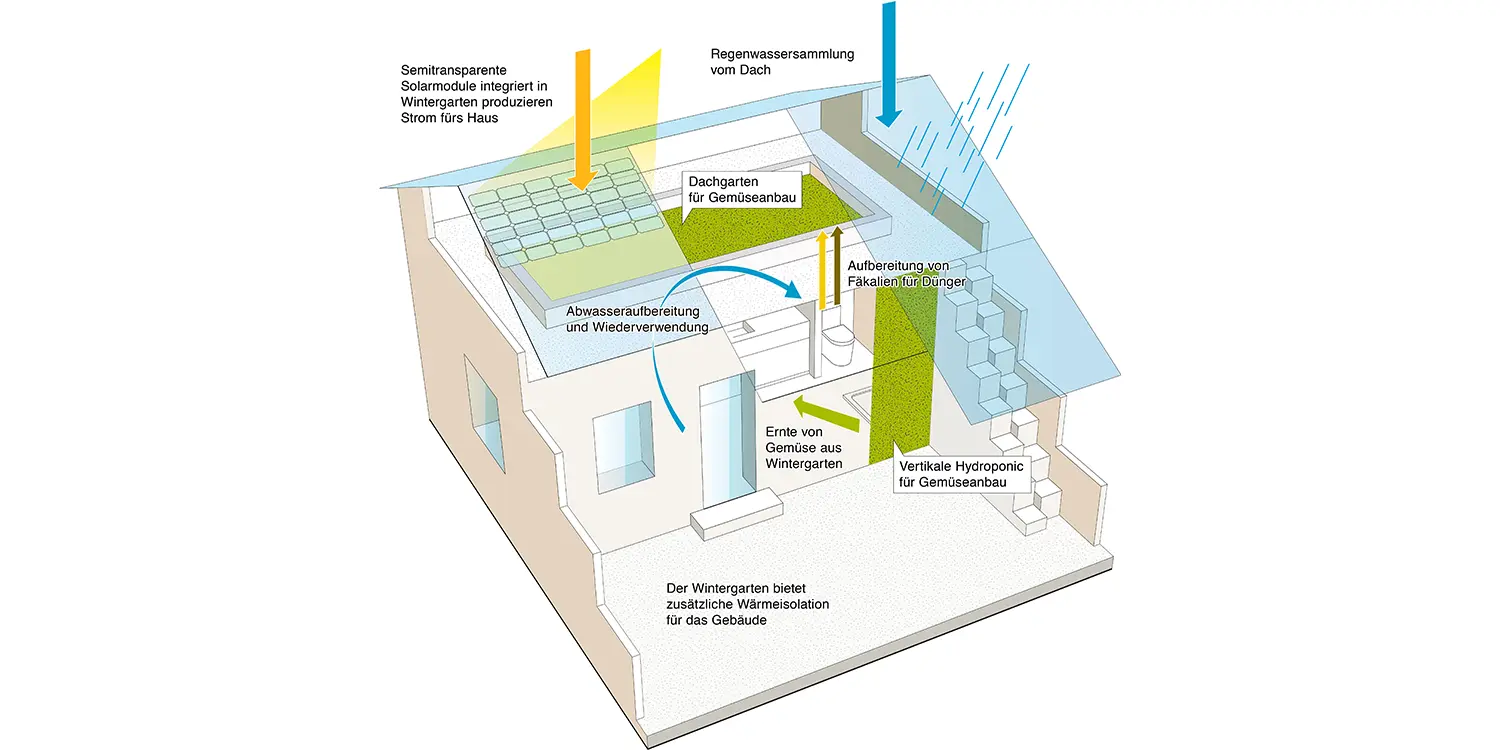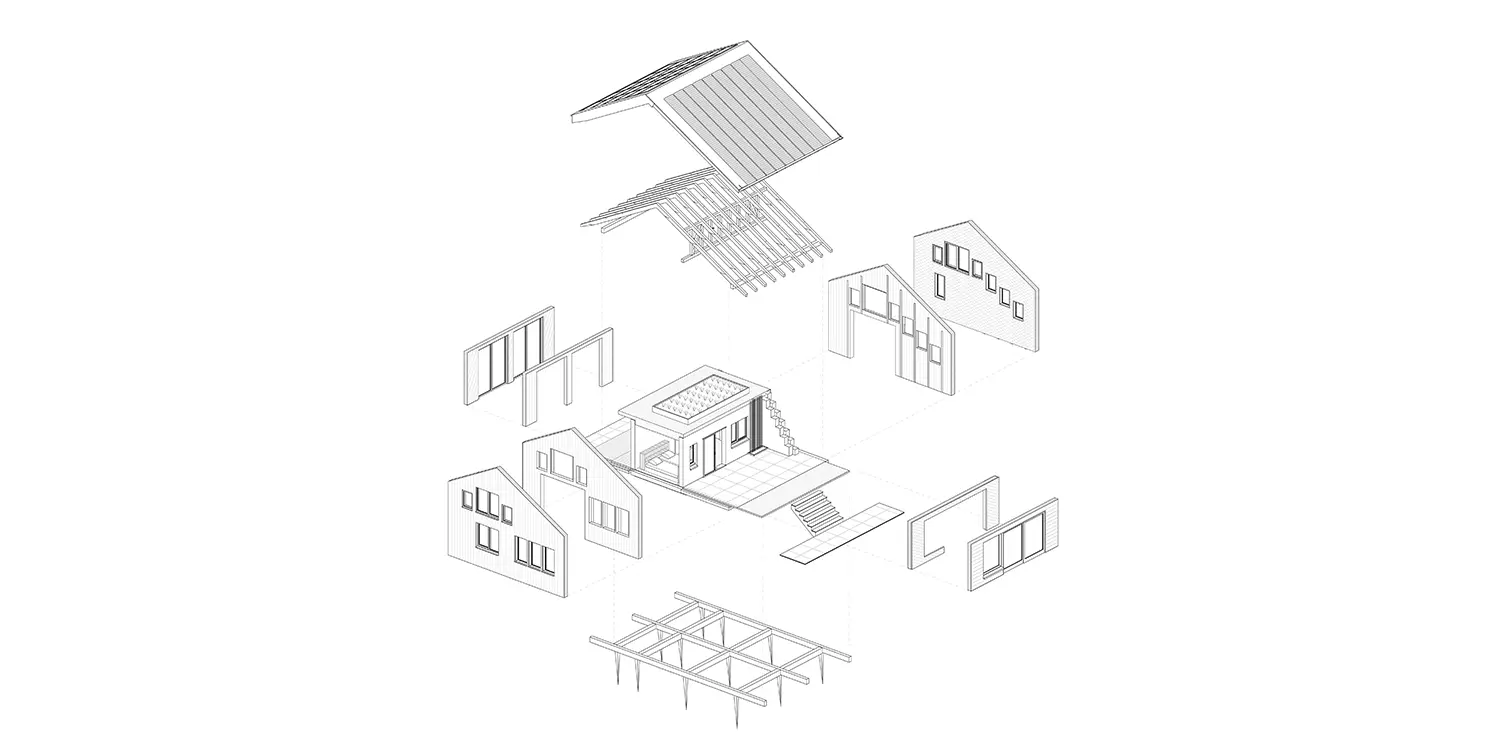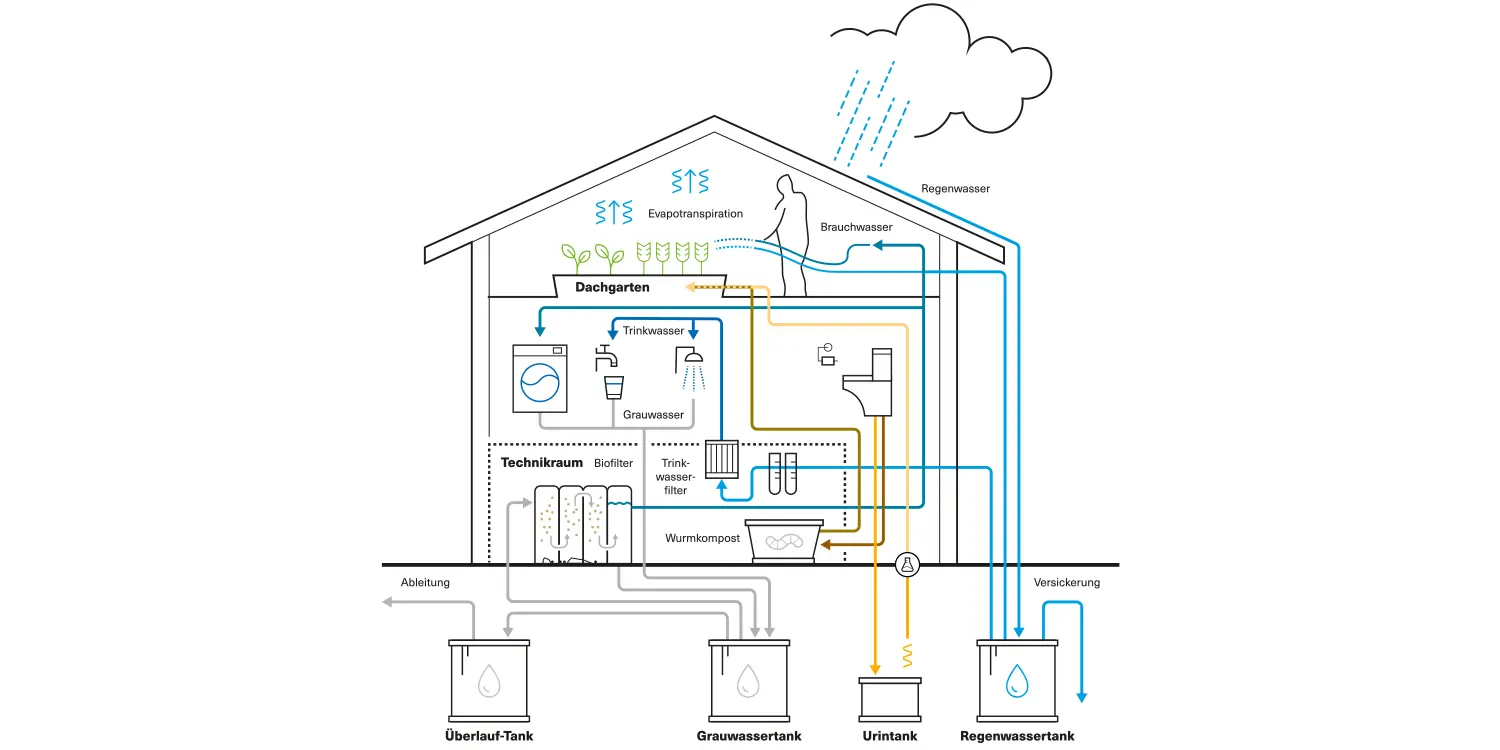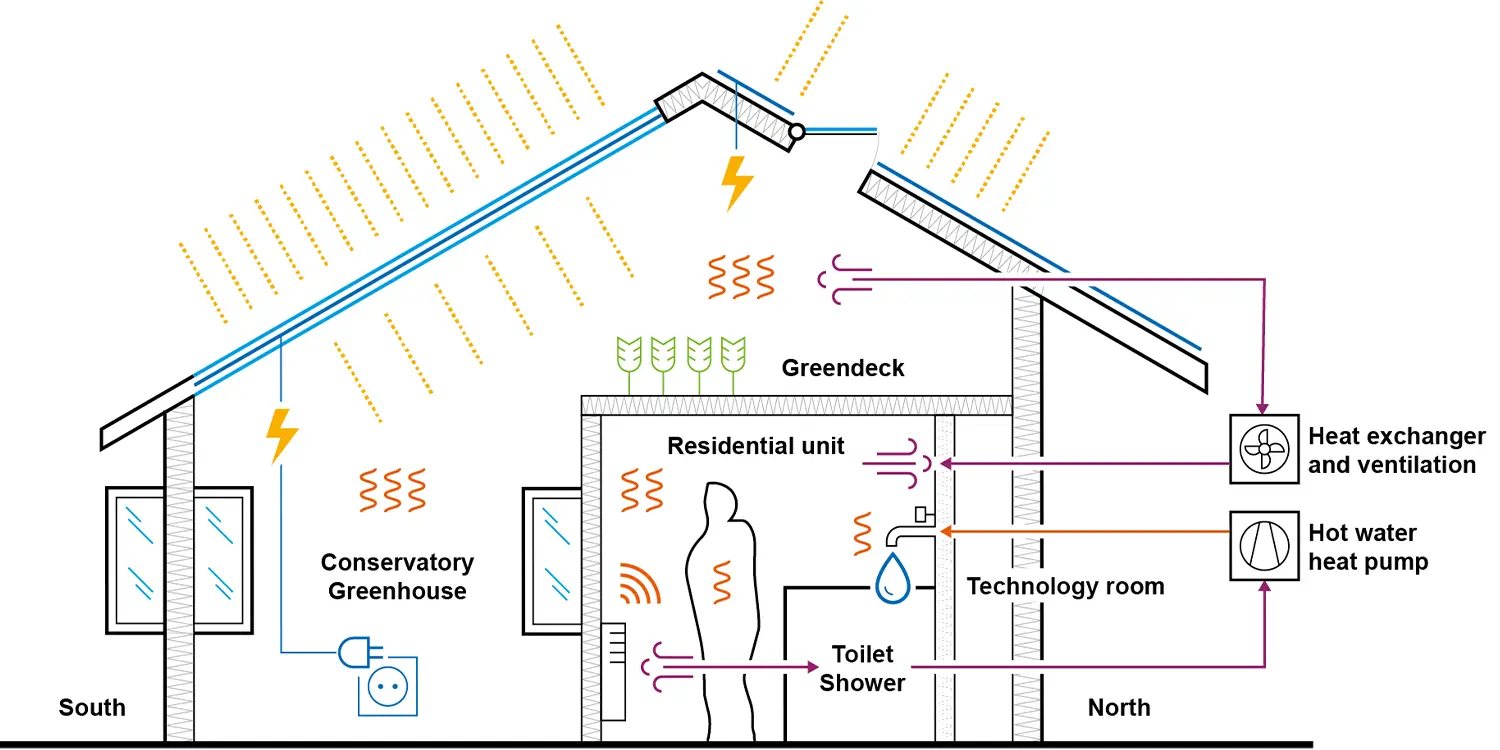Construction & Design of KREIS-Haus
More Biodiversity in the front yard
The circular process begins with the excavation. The nutrient-rich soil was reused for the rooftop garden and integrated into the surroundings of the house, instead of being deposited in a landfill. A variety of earth structures and plants promote biodiversity in the newly created landscape. The KREIS-Haus is built on a screw foundation without any use of concrete. This significantly reduces the impact on the soil compared to a conventional substructure, and the house can easily be deconstructed without causing any long-term damage. Additionally, the base of the building is covered with recycled gravel.
Sustainable Construction Materials
The KREIS-Haus consists of a residential unit made from solid wood, a small living space, and an adjacent conservatory. All the materials that were used in the construction are recyclable, ecological, and free of toxic substances. In addition to natural materials, such as clay and wood, the other building materials are also durable, recycled and reused, for example second-hand windows or recycled glass shards for the flooring. For the kitchen, we used a durable steel, and the furnishing also follows the ecological concept of the KREIS-Haus.
Solar Energy and Second-Life Batteries
The semi-transparent solar panels that are integrated into the conservatory (south facing) and the frameless roof-integrated solar system (north facing) produce the required energy for the KREIS-Haus. Second-Life batteries, which were previously used in vehicles belonging to the postal service, store the excess solar energy for later use. The ventilation, heating and warm water treatment also function as a circular system. Warm air from the greenhouse is supplied to the living space by means of a heat exchanger and the ventilation system. In turn, the warm water is heated via a heat pump that uses the warm air exhaust given off by the living space.
Circular Sanitary Facilities
The dry toilet operates with a conveyor belt. The toilet saves water and allows for nutrient recovery from the feces. These are processed and used as fertilizer for the rooftop garden. On the facade in the winter garden herbs are grown in a bamboo hydroponic directly in the water. Here, the slightly polluted wastewater from the kitchen and bathroom in the building is cleaned and used for irrigation.
Downloads
- Building Specifications KREIS-Haus (PDF 251 kB)
- Factsheet KREIS-Haus (PDF 140 kB)
- Solarstrom KREIS-Haus (PDF 4.05 MB)
- Urindünger KREIS-Haus (PDF 2.48 MB)
- Gemüse aus dem Wohnhaus (PDF 2.05 MB)
- Aussergewöhnliche Befestigung der Solarmodule - Raico (PDF 175 kB)
- Dämmung aus Hanf, Lehm und Kork - Stroba (PDF 157 kB)
- Das KREIS-Haus steht auf betonlosem Fundament - Krinner (PDF 180 kB)
- Energiesparende Warmwasserproduktion im KREIS-Haus - Swissframe (PDF 690 kB)
- Erholsamer Schlaf im KREIS-Haus - Hüsler Nest (PDF 140 kB)
- Fenster aus Mondholz - Schreinerei Schürpf (PDF 250 kB)
- Geballte Ladung Fachwissen für die neue Solaranlage - Firma Energie Netzwerk (PDF 144 kB)
- Gute Luft im KREIS-Haus - Zehnder (PDF 190 kB)Innovative Grauwasseraufbereitung im KREIS-Haus - Abderhalden Gartenbau (PDF 198 kB)
- Kalkfassade und ökologischer Holzschutz am KREIS-Haus - Dittlimaler AG (PDF 2.03 MB)
- Massivholzelemente für behagliches Raumklima - Tschopp (PDF 137 kB)
- Nachhaltige Bauplanung am KREIS-Haus - Oikos (PDF 170 kB)
- Nachhaltige Gemütlichkeit - Upboards (PDF 139 kB)
- Nachhaltiges Duscherlebnis im KREIS-Haus - Laufen (PDF 175 kB)
- Strom aus der Kraft der Sonne - Eternit (PDF 868 kB)
- Stück für Stück Elementbau am KREIS-Haus - Nägeli AG (PDF 458 kB)
- Traditionsfassade am KREIS-Haus - Schindelfabrik Müller (PDF 147 kB)
- Zweites Leben für Batterien - Kyburz (PDF 136 kB)
- Vom Abwasser zur Ressource - Vuna (PDF 136 kB)
- Vom Licht bis zur Steckdose: Die Elektroinstallation des KREISHauses - E. Kunz AG (PDF 2.08 MB)
- Modern und nachhaltig: Die Stahlküche im KREIS-Haus - Forster (PDF 3.45 MB)
- Komfortabel und energieeffizient Bauen -BB&A AG (PDF 140 kB)
- Frische Luft für das KREIS-Haus - Solvair (PDF 3.39 MB)
- Den Kreislauf schliessen – auch auf dem stillen Örtchen - Kompotoi (PDF 867 kB)
- Ausgeklügelte Dachkonstruktion im KREIS-Haus - Tüscher Dach AG (PDF 480 kB)




